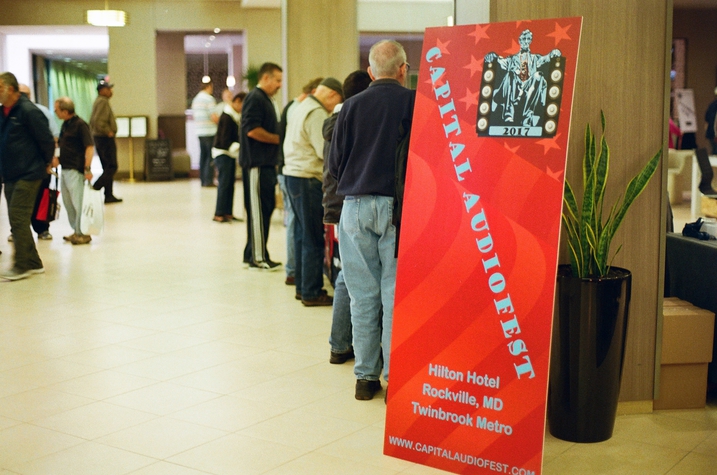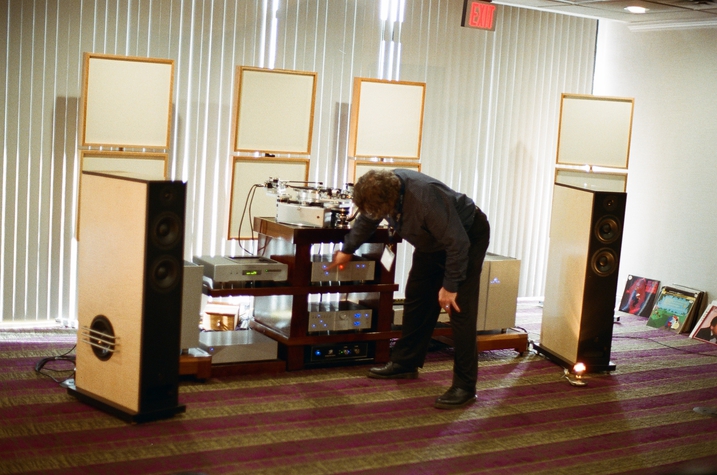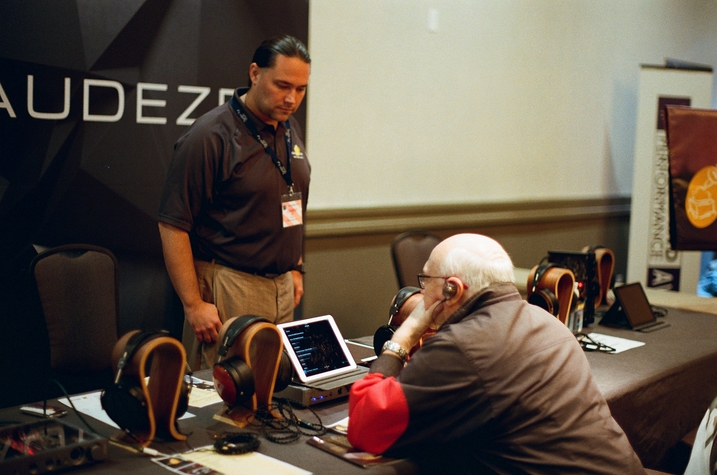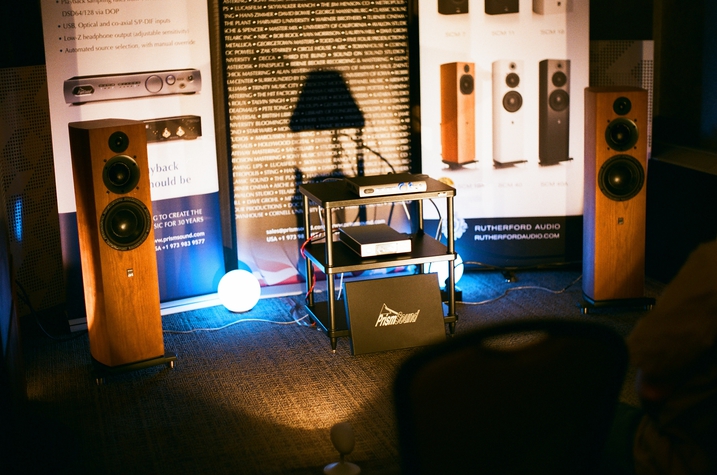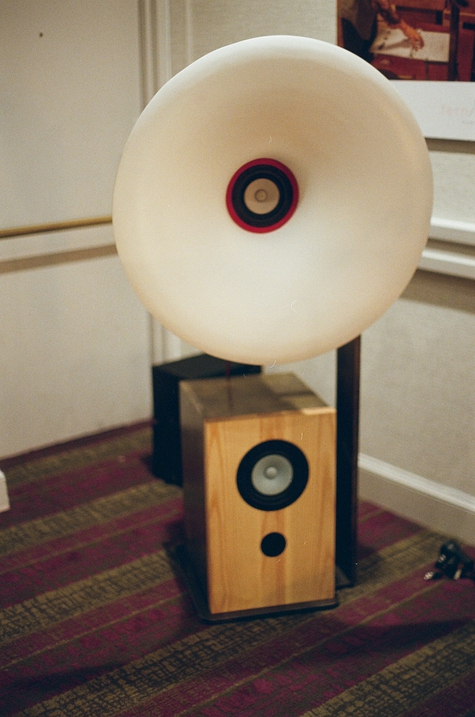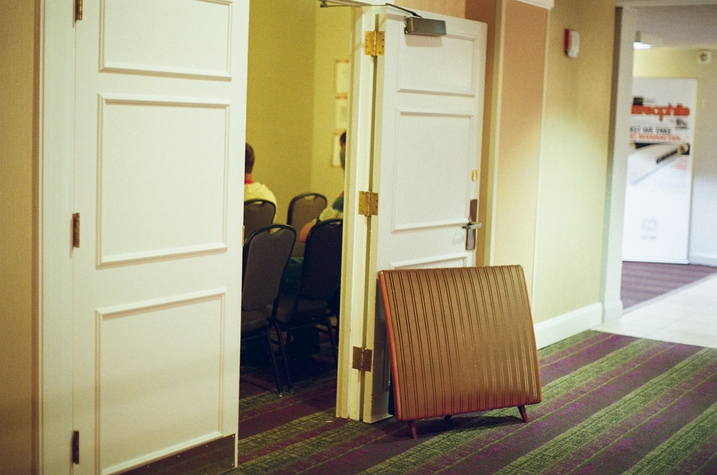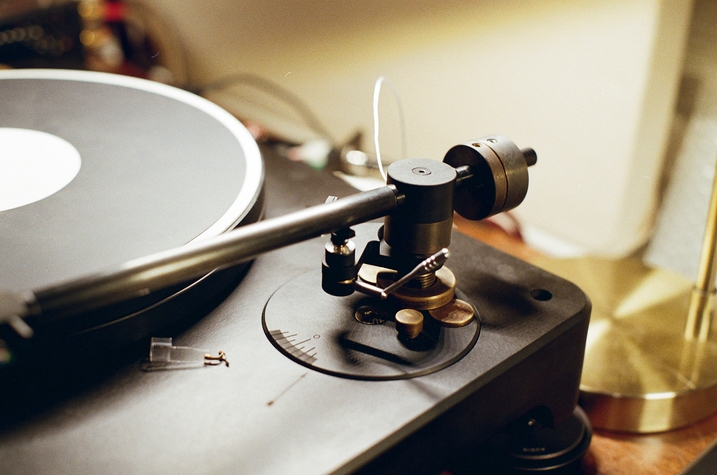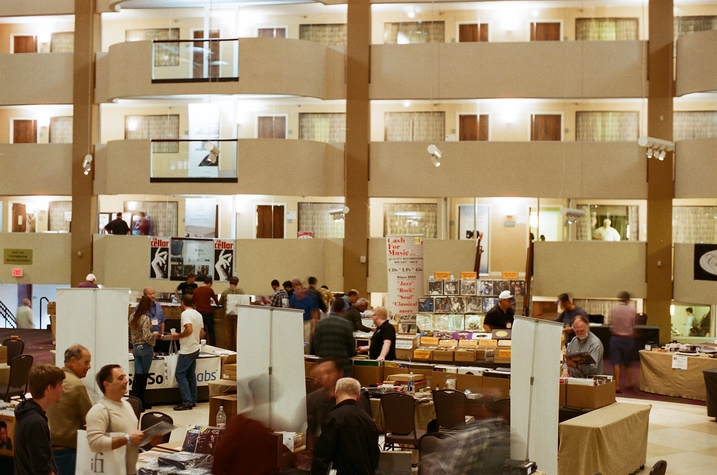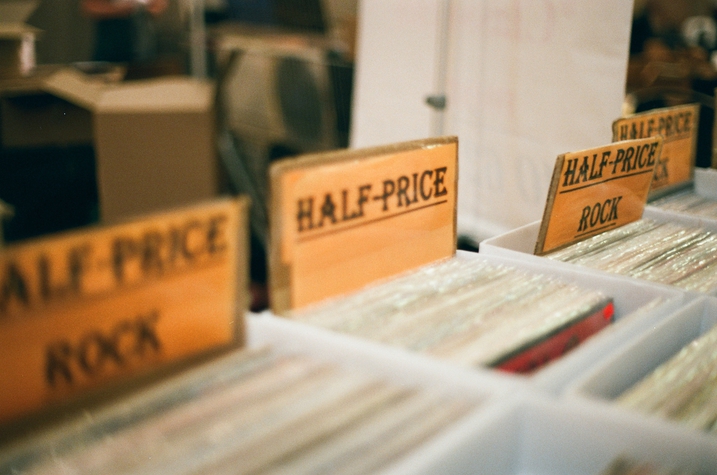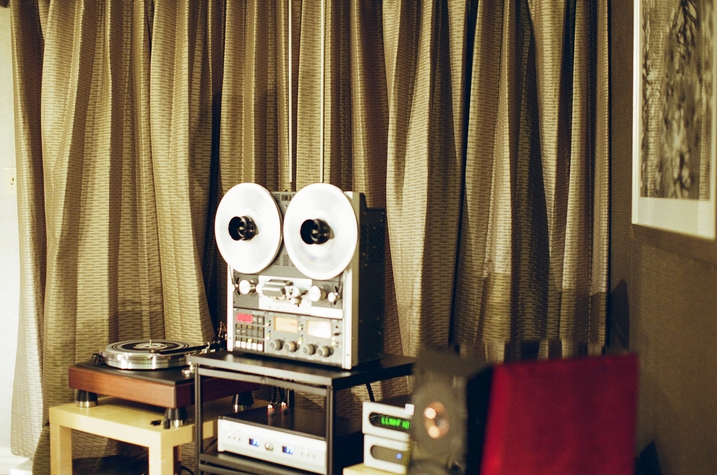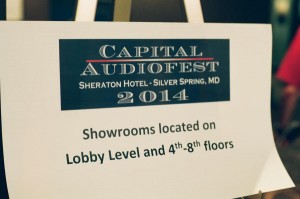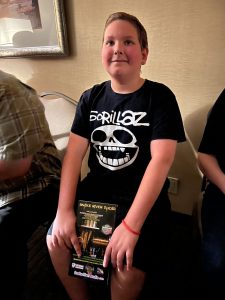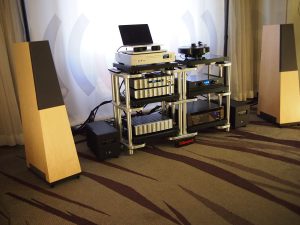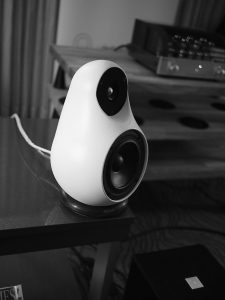The Capitol Audiofest was bigger than ever this year and I had less time than ever to see it. For those who don't know about the Capitol Audiofest, its an audio show that takes place in a hotel, with many demo rooms in the hotel being set up by a dealer, distributor, or occasionally a manufacturer to show off their products.
Shows like this are absolutely critical because for many products, and for people in many locations, it's the only chance people ever have to actually listen to new equipment without purchasing it. Not only that, it's the only chance people ever have to listen to multiple different systems one after the other so they can make any accurate comparison. Longtime readers have noted that I have complained for decades in these pages about the main problem in the high end community being a lack of reference. People can tell something is different, and they all too often assume that different means better. There are two keys to fixing this problem: the first is for more people to listen to live music and the second is for them to listen to more audio systems, preferably together and not in isolation. Audio shows are the only way left for many people to do the second one, and the Capitol Audiofest is one of the best high-end shows left. It's certainly been my favorite for many years.
Clearly the editors feel this way too since both I and Bruce Kinch were at the show. I'll leave Bruce to do a serious writeup, this is just a sketch of things at the show that I enjoyed.
Now, there's only so much listening that you can do in a nearly-square cement framed room, so making final judgement on things like speakers has to wait until you can hear them in better conditions. But because the sound of popular high-end gear is so dramatically different, getting a sense of those gross differences is certainly possible and that's critically important just to make basic decisions about whether you want to be looking at horn speakers or electrostats. But I won't attempt to describe critical sound issues in a show review just because I'd want to hear things under better conditions. What I will describe is what I saw and found interesting and a bit about what I heard.
Solid-State Amplifiers
There is a real lack of simple, straightforward, well-build solid state amps these days. We used to see high resolution amplifiers designed for studio monitors in the pro audio world, but much of that market has been replaced with internally powered speakers. We used to see a lot of nice monoblocks and straight stereo amps for home use but much of that market has been replaced with digitally controlled amps and integrated amps with fancy switching. But people are still designing and introducing new amplifiers. Bricasti, a company that started out in the high end of the pro audio world designing precision reverberation devices is now making some fine D/A converters as wel;las a large overengineered 125W stereo amplifier, the M150, and a still larger 200W monoblock, the M28. Both have seriously oversized output stages and power supplies in order to be able to sink a huge amount of current into a load.
Another company that started out in the pro world and is moving into the high end is Benchmark. They are selling a tiny power amplifier, the AHB2 which is a conventional class AB amp with discrete outputs, but powered with an oversized switching supply. The switching supply means they get efficiency almost as good as a class D amplifier, without the sonic problems of having to go class D. This is an example of the kind of engineering that was not possible only a few years ago, and an example of what is possible when switching systems are designed carefully and properly.
Bryston started out in the high end world but their amplifiers are everywhere in mastering studios and in the top end of the pro audio world. They were showing the Cubed Series of amplifiers, starting with the 135W 2.5B stereo amp and moving up to the thousand-watt 28B monoblock. These again are more conventional designs with brute-force supplies and a very fine follow-on to their previous line.
Technics, a company whose reputation in the high end world was not always so good, is trying very hard to make a new line of products intended for the high-end community. This includes their SE-R1 amplifier which actually is a class-D amplifier with direct digital conversion in the PWM modulator of the amp. They're implementing a lot of newer technologies such as the use of gallium nitride semiconductors for fast low-on-resistance output switching. How does it sound? It's hard to tell under show conditions and I am bound to be a bit skeptical about new technologies but it's interesting to see Technics trying for newer and better things.
Tube Amplifiers
It seemed everyone was selling a tube amp, but what I found interesting was a Japanese company called Elekit which was selling a 300B tube amplifier kit (using Lundahl output transformers!) as well as a small 6L6 push-pull amplifier design/ They looked like well-made kits designed around a single printed circuit board but with some precautions taken to keep from baking the board out as is seen with so many older PCB-wired amps. VK Music in Canada is the North American distributor and seemed very enthusiastic about the designs and about audio in general.
Headphones
Headphones were the number one big thing at the show. Not only was there an individual celebration called Can-Mania with a room having nothing but headphone demos, but there were headphone devices all over in various rooms. As younger people are finally starting to think about sound, so few of them have proper listening spaces. In many places, real estate is fabulously expensive and people can afford very expensive headphones and headphone amps while still not being able to afford space for proper speaker playback. So a lot of design effort now is going into really top grade headphone hardware for the first time in many years.
Two really exciting headphone things made me interested this year, and they are both things to come out of the pro audio world. Prism Sound, a company that has been making pro audio converters for years, was the company that in the late 1980s made the first digital converters that actually sounded decent. After many years of making successively better and better converters they are moving into the high end audio world with a number of products. What most interested me was the Callia, a PCM and DSD DAC with USB and S/PDIF inputs but also with a high grade headphone preamp built into it. Add a signal source and you have a complete headphone playback system in a small box. It's hard to tell what it sounds like on the show floor but I have used their products for decades and never heard anything of theirs I did not like.
Another company with a long tradition of making top grade products in the pro audio market is Beyerdynamic. Probably the first headphones I ever used in a studio were the venerable DT100s, which started a long line of headphones more or less culmanating in their DT770 studio headphone. They are now making a lower cost on-ear headphone for that market called the DT240 Pro, but one that also has a great application for home listening. It's detailed but not too bright. The good news is that it has a detachable cord so that if you forget you have them on and walk away you won't pull the whole rack behind you. The bad news is that the detachable connection is a 2.5mm jack, and I worry about the reliability of any of those jacks just as much as I worry about the reliability of the ubiquitous-but-often-faulty 3.5mm mini phone. Still worth giving a listen to, though.
Now, in addition to Prism a number of companies were selling headphone amps and combined DAC/amp combinations. The elegantly-named Schitt.Com company was showing a variety of hybrid designs with tube front ends and solid-state output stages.
Speakers
As always there were a lot of speaker vendors showing off the latest new devices as well as some very old ones, and as always they were mostly in rooms with serious acoustical problems that made it difficult to tell much about their products.
Volti Audio was showing off their Rival, a smaller horn-loaded speaker based around the same fundamental design as their Vittora speakers. Like most big horns they need a large room to sound right and in the small demo room available the low end seemed so bloated it distracted from everything else. I know this is likely a great speaker in the right room, but it wasn't the right room.
On the other hand, the Bob Carver Company was showing the Amazing Line Source. Being a line source, it had tight dispersion in the vertical plane but wide dispersion in the horizontal plane, and in a smaller and drier room this arrangement can result in a wider sweet spot than any other configuration. Unfortunately they demonstrated it in a huge room where you could hear slap echoes coming off the side walls. If Volti and Bob Carver had swapped rooms they would both have had far better demos.
The guys at Tenacious Sound were showing off the TAD ME-1K speakers. TAD is the professional division of Pioneer and they are known for some very high quality horn-loaded soffit-mounted mixing monitors, so I was surprised their new entries into the high end market weren't horn-loaded at all but were conventional vented boxes. These people put some serious attention into room treatment and the good sound in the room likely has as much to do with Tenacious' attention to acoustical detail as any of the equipment they were showing.
Studio Electric LLC was showing their FSX four-driver three-way system, a small floor-mounted speaker that looked great. They made some attempts at taming some of the room problems but it was hard to get a good sense of the low end quality of the speakers. I'd love to hear these in better conditions.
Harbeth was showing their M30.2 speakers, the latest in Harbeth's long line of small monitor speakers. With a recessed and controlled low end and clean but not etched top end, these are classic traditional British speaker designs updated for today's manufacturing, and they are designed for use in small boxy rooms which made them a good pick in the terrible hotel room acoustics.
Classic Audio Reproductions started out making a reproduction of the JBL Hartsfield speaker system but after great success with that they have been making some of their own horn-loaded designs. At the show they actually had a room large enough to show them off properly, unlike far too many of the companies showing large horn systems. They are also selling reproductions of those JBL high frequency horns with the venetian-blind acoustic lenses, which look as solid and clean as the originals.
On a very different note, the folks from Transaudio Group are now distributing the ATC studio monitors into the high end market. Transaudio is one of the biggest distributors of high grade studio gear, and seeing them moving into the high end world is a good thing. The ATC SCM40A speaker was on display and having used them in mastering rooms before I can say that they are very accurate in a good room and one of the few speakers that can convincingly reproduce female vocals.
Von Schweikert was showing their Ultra 11 speakers. Big sounding, they made everything played on them sound larger than life and in the room they were set up, that seemed appropriate.
Kent McCullum from Electrostatic Solutions was there, showing off rebuilt Quad ESL electrostats. Mr. McCullum has been around for a few years, not only buying and selling Quads but also rebuilding them from the bottom up and performing various repair services for Quad owners in need.
Greg Takesh from GT Audio Works was showing off a pair of his own handmade electrostats. They were huge panels, again much too large for the room they were being displayed in, and that room was packed to the point where you couldn't move around. All I could tell is that they sounded clean and very bright but it was hard to tell how much was the room and how much the speaker. If it's anything like their previous designs, though, it is worth giving a listen to in a better environment.
It seems that every time I come to the show I see more and more single-way systems based on full-range drivers and ingenious cabinets to get the most out of them. I'm generally not interested in these designs and didn't spend a lot of time looking at them but some that did stand out were from an Indian company called Rethm. I think I'd characterize what I heard as "musical but not detailed" and that appeals to a lot of people today. Beautifully made and with some careful engineering, these are worth looking at if you are one of those people.
Vinyl
Dr. Vinyl was showing off some record and stylus brushes that were handmade in Germany by Levin Design. They weren't cheap, but they were beautifully made and built to last a lifetime and might be well worth the investment if you're intending on spending that lifetime listening to records like many of us are.
Fern and Roby, a company local to me in Richmond, VA., is making a very interesting line of turntables with bases made of an epoxy-paper fibre composite, as well as matching preamplifiers. It's always good to see more people getting into this business and doing well with it.
Bob's Audio Devices was there again with some handy little moving coil step-up transformers. These are cine-mag transformers mounted in a box with appropriate connectors for easy attachment between your cartridge and preamp.
VPI was showing some great turntables through a playback system that was so colored it was hard to tell what was going on. A shame, since VPI makes some of the best-engineered tables around. Was that honk the speaker, the room, or the tonearm? I know it's not the tonearm because I know it can sound better than that.
Mobile Fidelity was there. Under new management for the past 15 years, MoFi still has much of their old catalogue available and they are making new records right now. Their "Ultradisc" process is a 2-step process with no intermediate "mother" metal which limits them to comparatively small runs. They're also now marketing a turntable.
I have been hearing of the AudioDeskSysteme Vinyl Cleaner Pro ultrasonic record cleaner for some time now and got to see one in person for the first time ever. It looks to be fairly foolproof and a lot easier to set up than the industrial ultrasonic cleaners I have used for LPs. I'd worry about how easy it would be to clean after running some really filthy yard sale finds through it, since the industrial cleaners are fairly easy to deal with in that regard. But it definitely looks like something I want to check out in more detail in the future.
Cool Things
The DC Hi-Fi Group, a local audiophile homebrew club, had a room that was worth checking out. They were showing off equipment built by club members but mostly they were showing off the philosophy that you can build stuff and have it sound good, and showing off the club where you can hang out with people who can help you make that happen. If you are at all in the DC area it's worth joining, and if you're ever visiting the DC area you might want to check out their facebook group and see if they are doing any events like listening parties or gear demos while you are in town.
Just Audio Repair Center had a booth where they were showing some vintage home hi-fi gear they had for sale. These guys are one of the last good consumer electronics repair centers in the area. They have a shop in Baltimore where they do repair work as well as buy and sell older used gear.
Media
The usual suspects were there, with AudioXPress and Stereophile giving out copies of their latest issue. What was interesting and unusual though was a magazine called Vinyl Times that is oriented to the vinyl record buyer. It's intended to be given out free at record stores. This is a very big deal to me, if only because it implies that there are enough record stores left in ths world to support such a magazine. I really liked these guys attempts to explain and present older technology as well as older music to a young audience.
Summary
There was an awful lot there, though, that I knew I wanted to see and I knew was there. Todd Garfinkle of M-A Recordings had a booth in the lobby and I must have just walked right past it. I would love to have seen what his new releases were because I have liked just about everything he ever did. And I know very well that one of the excellent LKV Research preamps was on display there but I never did manage to find it. I know there was a huge amount there and I saw only a tiny fraction of it, but that's just part of the way shows can be overwhelming. Overwhelming in a good way too.




